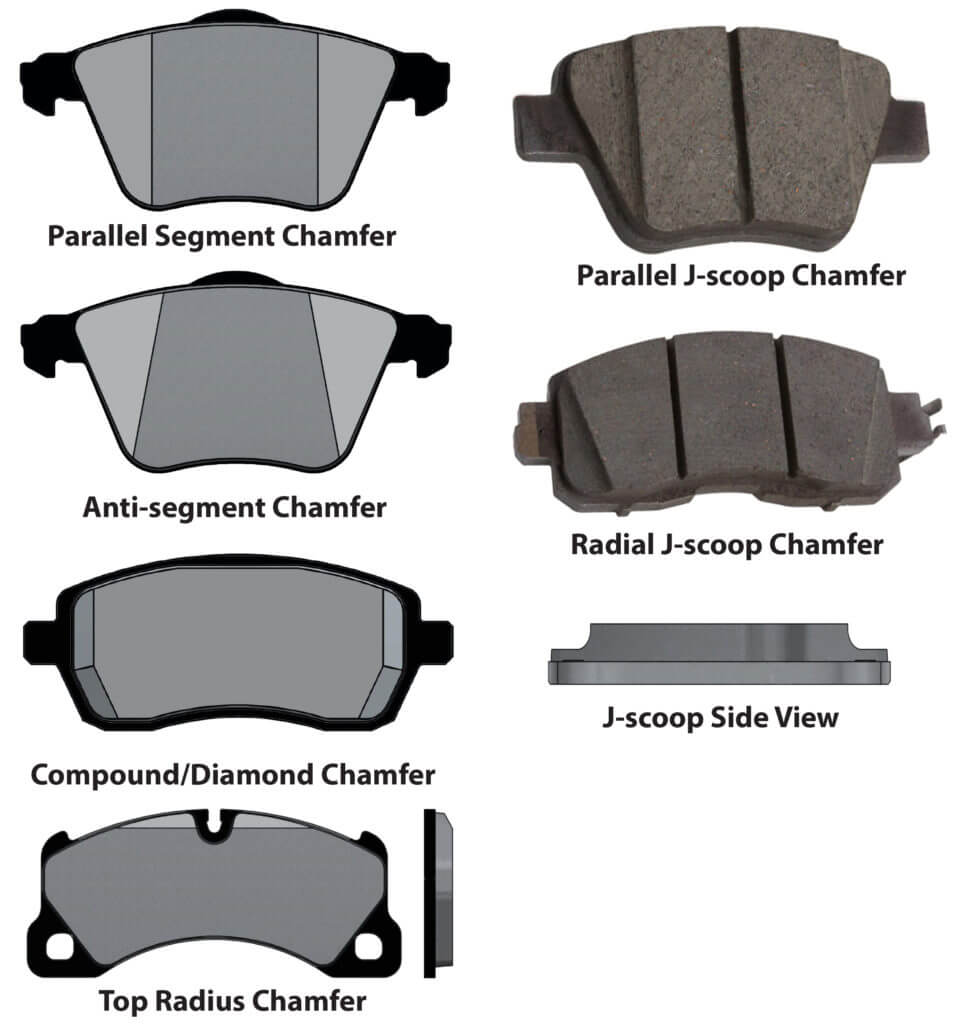Brake Pad Chamfer
What are the different types of brake pad chamfers?
Why manufacturers use design brake pad chamfers
A brake pad chamfer is cut or ground into the brake pad after it’s formed and cured. The chamfer’s main goal is to reduce vibration noise from the leading or trailing edge of the brake pad when it first touches the rotor. In addition, the taper provides a smaller contact area in the center of the pad where maximum braking pressure is applied.
The car makers usually determine the type of chamfer based on the rotor metalurgy, size and design, along with the weight of the vehicle, power assist installed for that vehicle. Chamfers also reduce backing plate flex.

Parallel Segment and Anti-segment (angled) Chamfer
The brake pad manufacturer adds a 25° or 15° chamfer on the leading and trailing edges of the friction block. The taper travels down to the minimum recommended pad thickness. This design removes friction material from the highest vibration areas on the leading and trailing edges of the brake pad.
Compound Diamond Chamfer
A compound chamfer has at least two different angles on the leading and trailing edges of the brake pad. The compound chamfers provide maximum rotor contact while still reducing noise from high vibration areas. This design is commonly used with square shaped pads.
Paralled and Radial J-Scoop Chamfer
The J-Scoop chamfer can be either parallel or radial (matches the angle and curvature of the brake pad). The round edge of the J-scoop provides maximum friction material strength while reducing vibration through the entire pad thickness.
©, 2019 Rick Muscoplat
Posted on by Rick Muscoplat